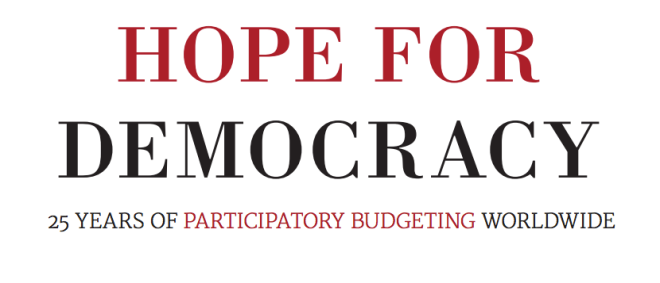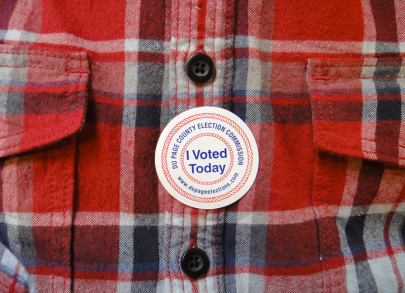Within the open government debate, there is growing interest in the role of technology in citizen engagement. However, as interest in the subject grows, so does the superficiality of the conversations that follow. While the number of citizen engagement and technology events is increasing, the opportunities for in-depth conversations on the subject do not seem to be increasing at the same rate.
This is why, a few weeks ago, I was pleased to visit the University of Westminster for a kick-off talk on “Technology and Participation: Friend or Foe?”, organized by Involve and the Centre for the Study of Democracy (Westminster). It was a pleasure to start a conversation with a group that was willing to engage in a longer and more detailed conversation on the subject.
My talk covered a number of issues that have been keeping me busy recently. On the preliminary quantitative work that I presented, credit should also go to the awesome team that I am working with, which includes Fredrik Sjoberg (NYU), Jonathan Mellon (Oxford) and Paolo Spada (UBC / Harvard). For those who would like to see some of the graphs better, I have also added here [PDF] the slides of my presentation.
I have skipped the video to the beginning of my talk, but the discussion that followed is what made the event interesting. In my opinion, the contributions of Maria Nyberg (Head of Open Policy Making at the Cabinet Office) Catherine Howe (Public-i), as well as those of the participants, were a breath of fresh air in the current citizen engagement conversation. So please bear with me and watch until the end.
I would like to thank Simon Burral (Involve) and Graham Smith (Westminster) for their invitation. Simon leads the great work being done at Involve, one of the best organizations working on citizen engagement nowadays. And to keep it short, Graham is the leading thinker when the issue is democratic innovations.
Below is also an excellent summary by Sonia Bussu (Involve), capturing some of the main points of my talk and the discussion that ensued (originally posted here).
***
“On technology and democracy
The title of yesterday’s event, organised by Involve and Westminster University’s Centre for the Study of Democracy, posed a big question, which inevitably led to several other big questions, as the discussion among a lively audience of practitioners, academics and policymakers unfolded (offline and online).
Tiago Peixoto, from the World Bank, kicked off the debate and immediately put the enthusiasm for new technologies into perspective. Back in 1795, the very first model of the telegraph, the Napoleonic semaphore, raised hopes for – and fears of – greater citizen engagement in government. Similarly the invention of the TV sparked debates on whether technology would strengthen or weaken democracy, increasing citizen awareness or creating more opportunities for market and government manipulation of public opinion.
Throughout history, technological developments have marked societal changes, but has technological innovation translated into better democracy? What makes us excited today about technology and participation is the idea that by lowering the transaction costs we can increase people’s incentives to participate. Tiago argued that this costs-benefits rationale doesn’t explain why people continue to vote, since the odds of their vote making a difference are infinitesimal (to be fair voter turnouts are decreasing across most advanced democracies – although this is more a consequence of people’s increasing cynicism towards political elites rather than their understanding of mathematical probabilities).*
So do new technologies mobilise more people or simply normalise the participation of those that already participate? The findings on the matter are still conflicting. Tiago showed us some data on online voting in Rio Grande do Sul participatory budgeting process in Brazil, whereby e-voting would seem to bring in new voters (supporting the mobilisation hypothesis) but from the same social strata (e.g. higher income and education – as per the normalisation hypothesis).
In short, we’re still pretty much confused about the impact of technology on democracy and participation. Perhaps, as suggested by Tiago and Catherine Howe from Public-i, the problem is that we’re focusing too much on technology, tempted by the illusion it offers to simplify and make democracy easy. But the real issue lies elsewhere, in understanding people and policymakers’ incentives and the articulation (or lack thereof) between technologies and democratic institutions. As emphasised by Catherine, technology without democratic evolution is like “lipstick on a pig”.
The gap between institutions and technology is still a big obstacle. Catherine reminded us how participation often continues to translate into one-way communication in government’s engagement strategies, which constrains the potential of new technologies in facilitating greater interaction between citizens and institutions and coproduction of policies as a response to increasing complexity. As academics and practitioners pitch the benefits of meaningful participation to policy makers, Tiago asked whether a focus on instrumental incentives might help us move forward. Rather than always pointing to the normative argument of deepening democracy, we could start using data from cases of participatory budgeting to show how greater participation reduces tax evasion and corruption as well as infant mortality.
He also made a methodological point: we might need to start using more effectively the vast array of data on existing engagement platforms to understand incentives to participation and people’s motivation. We might get some surprises, as findings demystify old myths. Data from Fix My Street would seem to prove that government response to issues raised doesn’t increase the likelihood of future participation by as much as we would assume (28%).** But this is probably a more complicated story, and as pointed out by some people in the audience the nature and salience of both the issue and the response will make a crucial difference.
Catherine highlighted one key problem: when we talk about technology, we continue to get stuck on the application layer, but we really need to be looking at the architecture layer. A democratic push for government legislation over the architecture layer is crucial for preserving the Internet as a neutral space where deeper democracy can develop. Data is a big part of the architecture and there is little democratic control over it. An understanding of a virtual identity model that can help us protect and control our data is key for a genuinely democratic Internet.
Maria Nyberg, from the Cabinet Office, was very clear that technology is neither friend nor foe: like everything, it really depends on how we use it. Technology is all around us and can’t be peripheral to policy making. It offers great opportunities to civil servants as they can tap into data and resources they didn’t have access to before. There is a recognition from government that it doesn’t have the monopoly on solutions and doesn’t always know best. The call is for more open policy making, engaging in a more creative and collaborative manner. Technology can allow for better and faster engagement with people, but there is no silver bullet.
Some people in the audience felt that the drive for online democracy should be citizen-led, as the internet could become the equivalent of a “bloodless guillotine” for politicians. But without net neutrality and citizen control over our own data there might be little space for genuine participation.
*This point was edited on 12/07/2014 following a conversation with Tiago.
** This point was edited on 12/07/2014 following a conversation with Tiago.”
—————————
I am also thankful to the UK Political Studies Association (PSA), Involve and the University of Westminster for co-sponsoring my travel to the UK. I will write more later on about the Scaling and Innovation Conference organized by the PSA, where I was honored to be one of the keynote speakers along with MP Chi Onwurah (Shadow Cabinet Office Minister) and Professor Stephen Coleman (Leeds).










